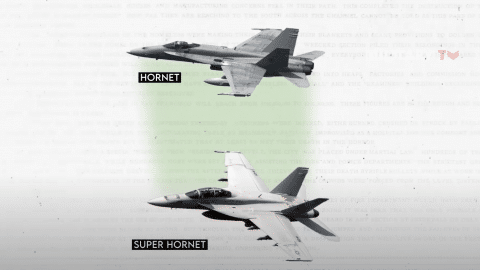
YouTube / Military TV
There’s no doubt that both the Hornet and Super Hornet have a place in the U.S. arsenal. And while they belong to the same family of fighter jets designed by Boeing, there are some differences between the two fighters.

Firstly, the Hornet is smaller and lighter, evident in its lighter takeoff weight and payload capacity than the Super Hornet. The latter’s bigger airframe can accommodate more weapons and fuel, extending its combat radius to 1,275 nautical miles with external fuel tanks.
Moreover, the Super Hornet incorporates a more modern APG-79 Active Electronically Scanned Array radar system while benefitting from upgraded electronic warfare systems and enhanced network connectivity.

Hornets were initially designed to be operated on carriers as multirole fighters. At the same time, the Super Hornet was explicitly developed to be more advanced and versatile, allowing it to be used for air superiority, strike missions, electronic warfare, and even aerial refueling.
As a result, the Super Hornet is usually considered by many to be a 4.5-generation fighter, while the Hornet is typically classified as a 4th-generation fighter.